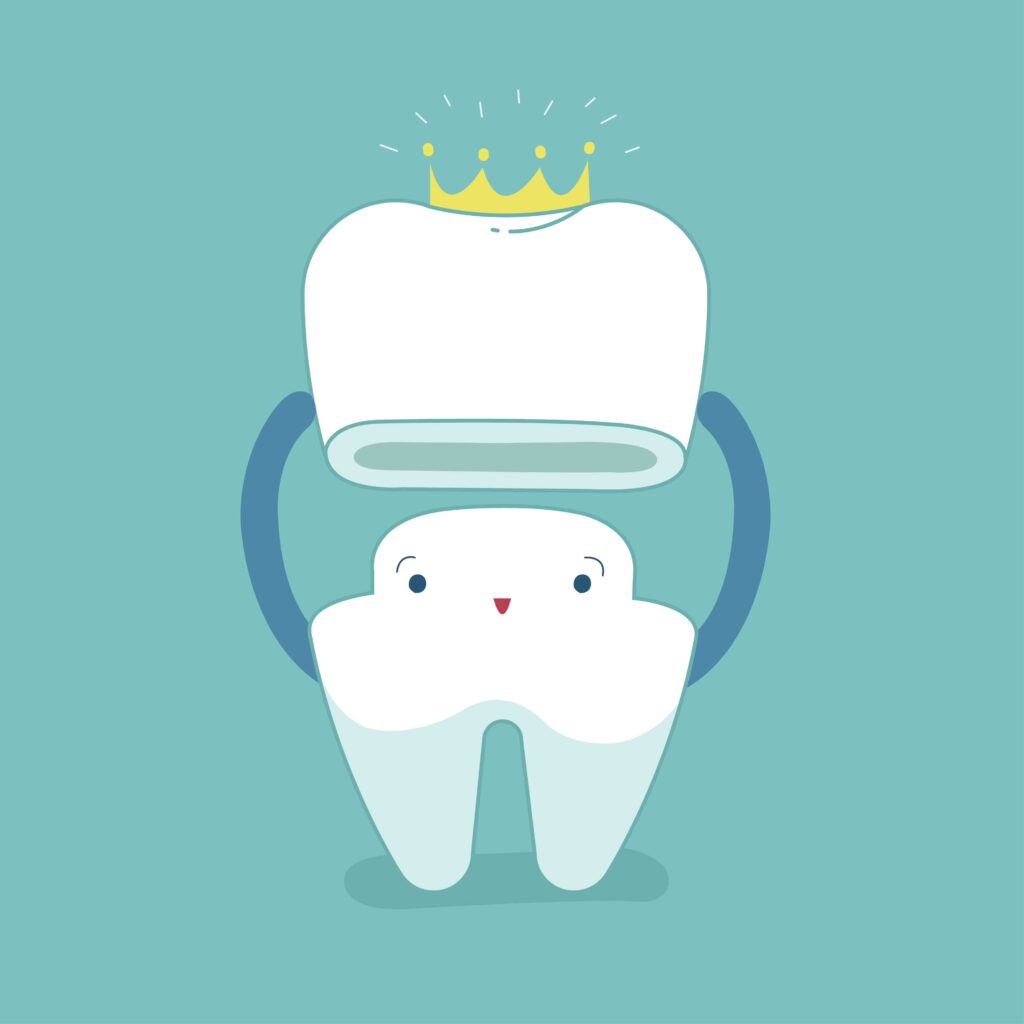
Teeth are incredibly strong. In fact – the tooth enamel is the strongest substance in the entire body. It’s even stronger than your bones. However, it’s not completely indestructible. Your teeth can become damaged from injuries, tooth decay, and other causes. During your appointment with your dentist, they will be able to suggest the best possible method to restore the integrity of your tooth. Two of the most common restoration options they may suggest are dental crowns or fillings. Here’s how each of them works so you know what you can expect.
How Do Dental Fillings Work?
A dental filling is used to treat minor damage to the teeth. This includes cavities and small fractures. To complete this procedure, your dentist begins by administering a local anesthetic, if necessary, to numb the area. Then, they will prepare your tooth by removing any damaged parts and applying an acidic gel to sanitize the area. This way, lingering bacteria is eliminated. Next, the tooth is filled with high-quality dental material. This can include porcelain, amalgam, composite resin, or gold. Today, composite resin is the most common material used because of its durability and natural-looking appearance.
How Do Dental Crowns Work?
Dental crowns are also used to restore damaged teeth, but they are much different than fillings. Crowns are covers or “caps” that are placed over the chewing surface of compromised teeth. They build up and protect teeth from enduring additional damage. A dentist may recommend a dental crown for the following:
- Protect a tooth that has a large filling
- Protect a tooth that has undergone root canal treatment
- Secure a bridge to replace a missing tooth
- Protect a weak tooth from additional damage
- Restore a fractured tooth
- Cover a misshapen tooth
- Attach to a dental implant to replace a missing tooth
After numbing the area with a local anesthetic, your dentist will remove any damaged portions of the tooth and a small amount of enamel from the chewing surface of the tooth to make room for your restoration. Then, impressions are taken and sent to the dental lab where your dental crown will be custom-made just for you. Until it is ready, you will be given a temporary dental crown to wear. After just a couple of weeks, your dentist will be ready to secure your final crown to your tooth.
Dental crowns can be made from various materials, like metal alloys, ceramic, porcelain fused-to-metal, composite resin, and porcelain. Porcelain is common because of its strength and natural appearance.
If your damaged tooth needs some help, restorations like dental fillings and dental crowns can help to keep your teeth healthy for many years down the road. During your appointment with your dentist, they will examine your smile to determine if either of these restorations or another one is ideal to meet your needs. Your smile will be good as new in no time!
About the Author
At Bridge Mill Dental Care, we have a team of three skilled dentists serving patients in the Indian Land community. With their combined experience and expertise, patients can get pretty much anything they need under one roof. If you have a decayed or damaged tooth, they would be happy to help. For more information or to schedule a consultation, visit their website or call (803) 650-3925.
